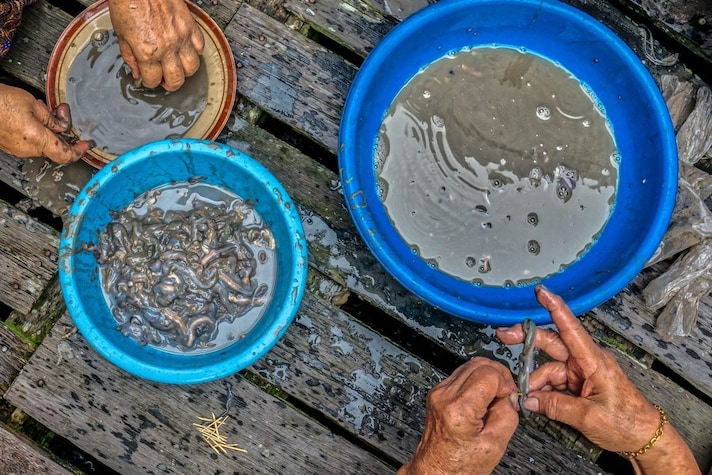What is Tamilok, the Disgusting Mollusk That’s an Acquired Taste in The Philippines
Have you ever encountered the disgusting-looking tamilok? Here we explain everything you need to know about this!
;Resize,width=742;)
A dish considered a delicacy in its homeland and even a source of pride, but in other countries it is controversial and disgusting: we are talking about tamilok. This is counted among the exotic foods of the Philippines and just like balut, tamilok is also a dish not suitable for everyone. Let's find out its origin and how it can be eaten.
The Terrible Reactions After Tasting It
You should know that the tamilok is known as a woodworm but is described as a mangrove snail or sea termite. It lives inside the trunks of mangroves, which are trees typical of coastal areas, and is similar to a long, whitish larva that feeds on the bark of these trees. In its homeland, it is actually collected from the trunks of the plants and consumed as a real local delicacy.
Tamilok became famous in the U.S. after being featured on food shows like Bizarre Foods with Andrew Zimmern and Fear Factor, where its raw, live consumption intrigued adventurous eaters. Celebrities and food enthusiasts, like Andrew Zimmern himself, were often seen reacting with a mix of awe and disgust as they tried it for the first time, amplifying its exotic allure. Social media further fueled its rise as a must-try, extreme delicacy, attracting those curious about unusual culinary experiences: it's said that the taste vaguely recalls that of oysters.

In fact, in the Philippines, they consider these mangrove insects as a delicacy, seasoning them with vinegar, garlic, pepper and sometimes soy sauce to enhance the softness of the meat. It is advisable to eat it as an appetizer or snack, perhaps accompanied by a cold beer or another type of alcohol.
Tamilok in the Cultural Identity of The Philippnes
Ivana Mrazova explicitly said, during a reality show, that the smell of tamilok was similar to that of excrement. Technically, once extracted from the mangroves, they are immersed in vinegar precisely to eliminate the pungent but characteristic smell. In some areas of the Philippines, tamilok can be grilled or cooked, but the common custom is to eat them raw to keep their gelatinous consistency intact. Like many insects, despite their somewhat creepy appearance, they have numerous nutritional benefits including proteins, vitamins and minerals. Rich in omega-3 fatty acids, they are considered healthy for the heart and for excellent brain function.
Very popular in the province of Palawan, also in the Philippines, the dish has become part of the gastronomic culture in these parts. Collecting tamilok is often a family activity and the consumption of these insects represents an occasion for socializing and celebrating. For many, this dish is also a symbol of sustainability since the mangroves, the trees in which they are found, are easily available and do not require intensive or expensive agricultural practices.
So, Is Tamilok Safe to Eat?
Yes, tamilok is generally safe to eat, but it should be properly sourced and prepared. It's typically eaten raw in the Philippines and other Southeast Asian countries, where it's harvested from healthy mangrove trees. However, like any raw seafood, there’s a small risk of contamination, so it’s important to ensure it’s fresh and handled correctly to avoid foodborne illnesses. If you're trying it, make sure it's from a reputable source.
;Resize,width=767;)



